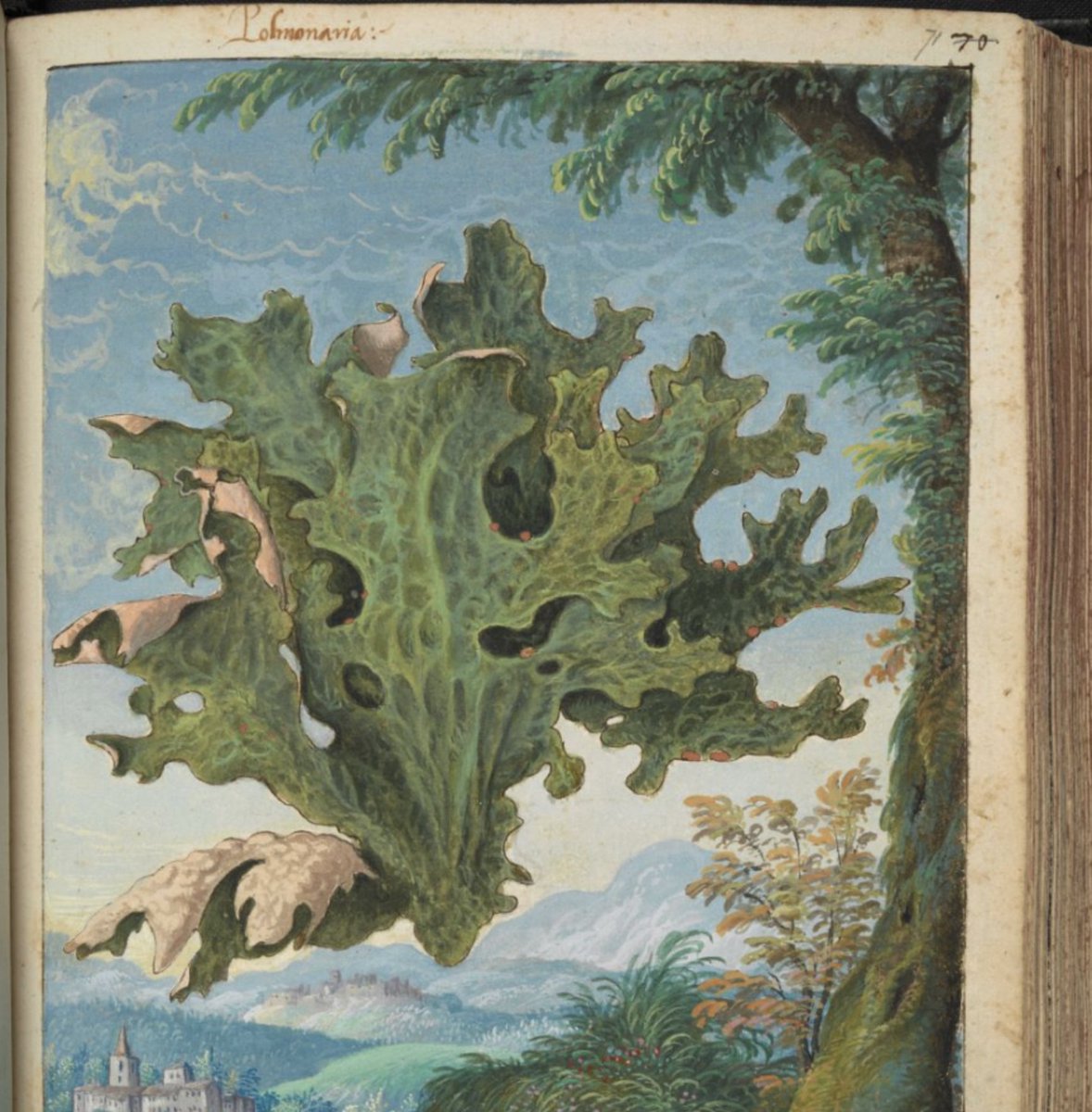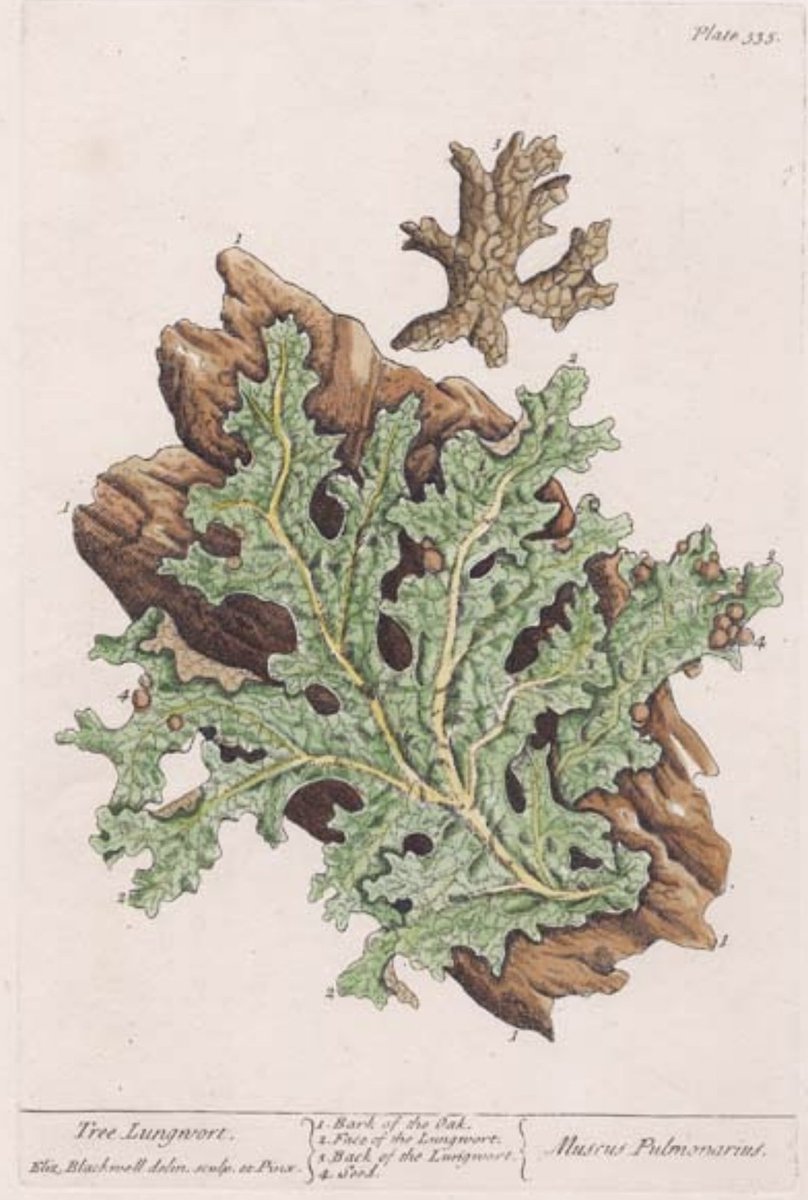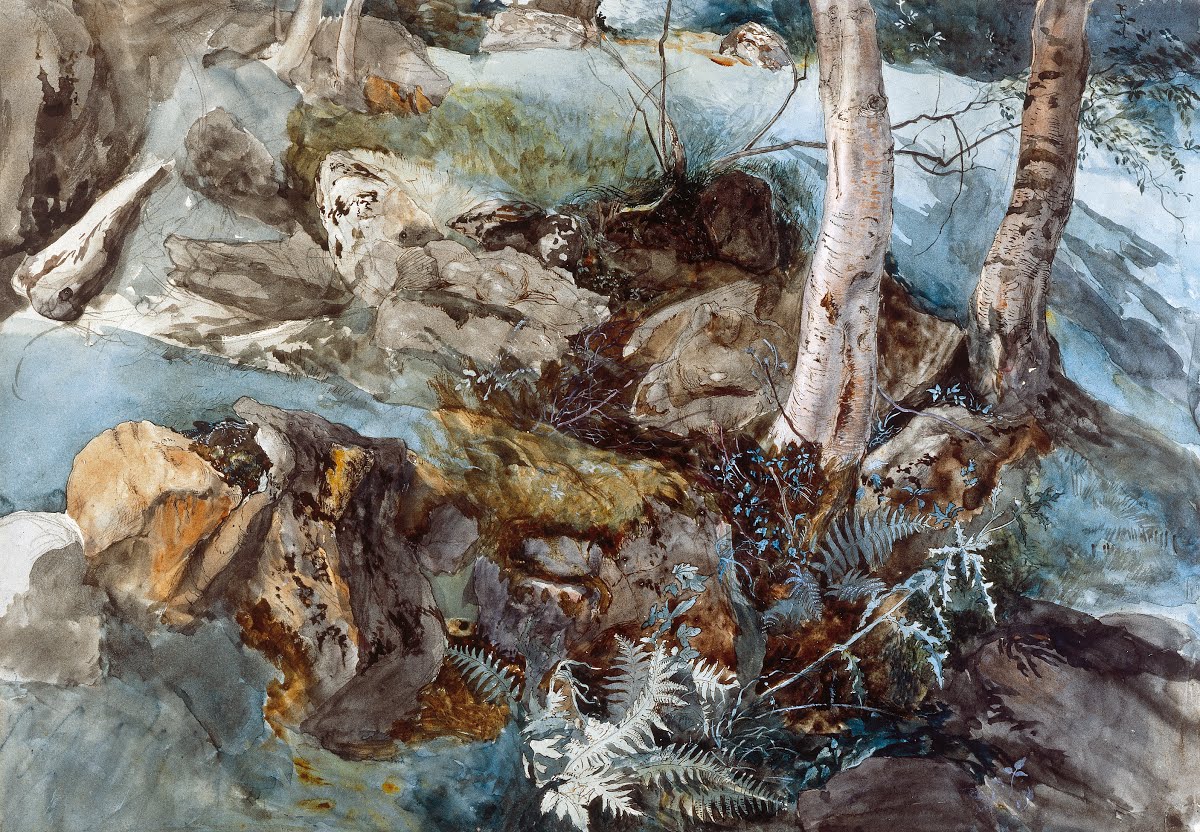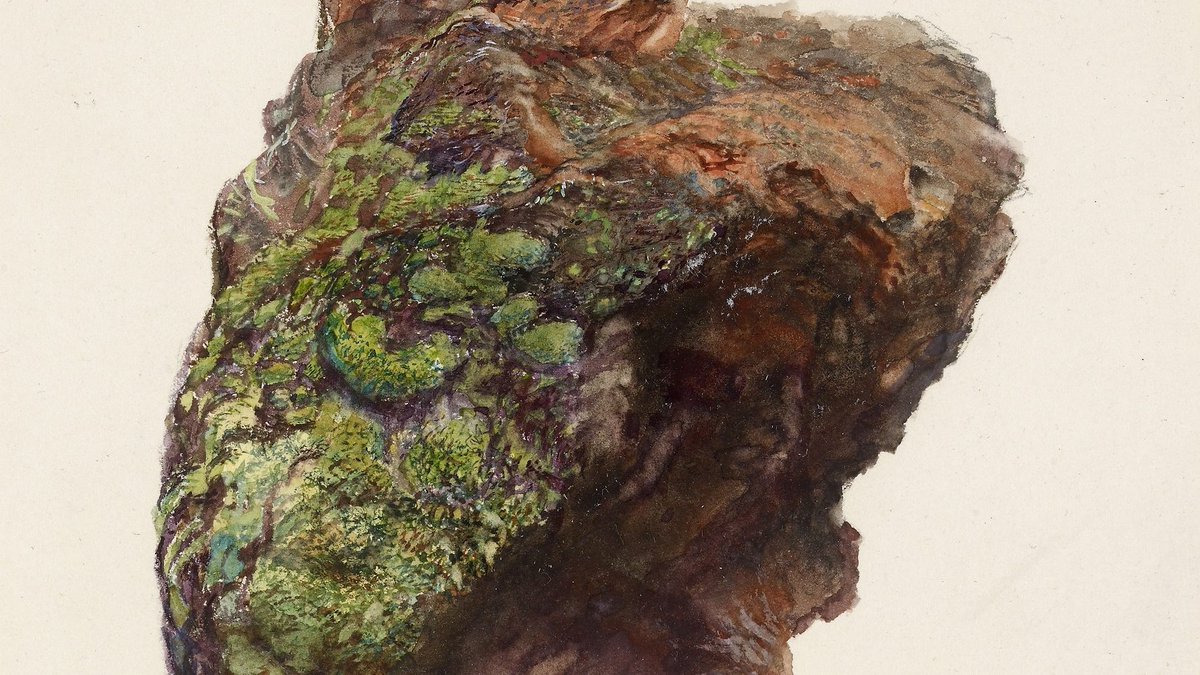Epiphytes - plants that grow on other plants - are the defining species of Britain's temperate rainforests.
So to celebrate them I'm doing a thread on EPIPHYTES IN ART & LITERATURE! #Geek
First off: Ernst Haeckel's Tree Lungwort (Lobaria pulmonaria), 1899 1/n
So to celebrate them I'm doing a thread on EPIPHYTES IN ART & LITERATURE! #Geek
First off: Ernst Haeckel's Tree Lungwort (Lobaria pulmonaria), 1899 1/n

2/n EPIPHYTES IN ART & LITERATURE:
Possibly the earliest example of epiphytic plants in British art is this 17th century frieze of Owain Glyndwyr’s Hollow Oak in Dolgellau, Wales. The tree appears to be covered in mosses & polypody ferns. (The devil also dances in its branches)
Possibly the earliest example of epiphytic plants in British art is this 17th century frieze of Owain Glyndwyr’s Hollow Oak in Dolgellau, Wales. The tree appears to be covered in mosses & polypody ferns. (The devil also dances in its branches)

3/n Tree Lungwort (Lobaria pulmonaria), a lichen whose strongholds now lie in our Atlantic rainforests, used to be more widespread across Britain & Europe. It features in early modern herbals as a cure for lung disease. This one's by Italian artist Gherardo Cibo, c1664-84. 

4/n Gherardo Cibo’s beautiful illustrations of Mattioli's Dioscorides (1664-84) also includes other epiphytes, like Polypody fern, and these more generic depictions of ‘tree moss’ and ‘lichen’: 





5/n Early botanists also started taking an interest in lichens in the 18th century. Here’s Tree Lungwort depicted by Elizabeth Gaskell (1737) and Andreas Friedrich Happe (c1788): 



6/n In 1791, English artist William Gilpin – who came up with the idea of the ‘picturesque’ – waxed lyrical about “the variety of mosses… which stain the oak… it gives a lustre to the trunk”; as well as “lychens” and “liver-worts” 





7/n The English poet John Clare wrote in 1819: “the dark ivy creeps beautifully picturesque up the grey barky trunks of ash and oak appearing more lovely from the jagged leaves of Lungwort which mingle with it…” (‘The Woodman or the Beauties of a Winter Forest’) 

8/n The Victorian aesthete John Ruskin appreciated the minuatiae of nature, calling lichens and mosses “the most honoured of the earth-children”. Here are some of his studies of mosses and ferns from the Lake District and Scotland. 





9/n What other artists, writers and poets have celebrated epiphytic plants – mosses, lichens, liverworts, ferns – in their work? My examples here have been historical (out of copyright), but what about contemporary artists? Please add to this thread by replying below!
• • •
Missing some Tweet in this thread? You can try to
force a refresh















